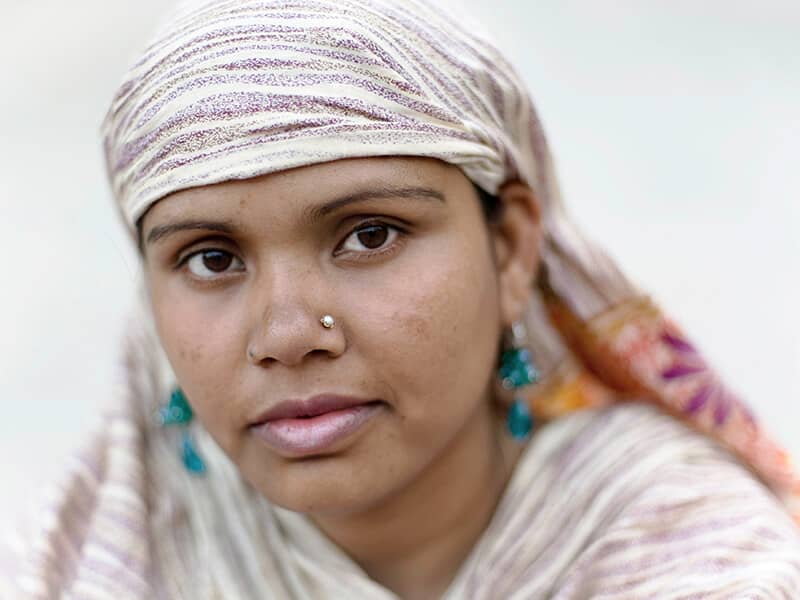Over the past few days, protesters in Damascus torched the Danish and Norwegian embassies, mobs clashed on the streets of Beirut and stormed the Danish mission, and Palestinian gunmen seized the Gaza offices of the European Union. Did all this fury really come from a series of 12 caricatures depicting the Prophet Muhammad that were first printed in the Danish newspaper and then re-printed throughout Europe and New Zealand over the past month?
Ostensibly, it did. But the roots of the anger run much deeper. As one young Syrian businessman who joined the protests in Damascus on Saturday told me, the cartoons were just "the straw that broke the camel’s back." On Saturday, young people marched through the city chanting Islam’s main creed—There is no God but God and Muhammad is his messenger. Earlier that day, Syrians had received text messages saying, “Go out to the street and defend your prophet!” With an increasingly religious population, the government could not afford to look like it would resist such a call. In fact, to gain favor with its population, the government must support the call for Muslims to defend their prophet.
Since 9/11, Muslims have come to feel that their religion is fair game for a kind of criticism and ridicule that is taboo toward other ethnic or religious groups. For example, Jesus or Christianity itself would never be blamed for the killings that took place at the hands of Christian Serbs in the civil war in Yugoslavia. By portraying the Prophet with a turban in the shape of an explosive device or with devil horns, the Danish cartoonists were telling Muslims that the very essence of their religion—the messenger himself, the role-model for all Muslims—is a terrorist.
Still, the intensity of Muslim reaction to these cartoons is hard for non-Muslims to understand. It is linked to problems facing much of the Muslim world—internal frustrations with repressive governments, external pressures on the regimes, and poor communication between the Muslim and Western worlds. Like many other countries in the Arab and Muslim world, Syrians are becoming more religious. Rampant corruption, a distrust of their government, and a lack of freedom of speech and freedom to organize has led many to return to their churches and their mosques. Still, the burning of the embassies in Syria shocked many. Syria is a secular country where foreigners often say they feel welcomed, where men and women mix freely and where women can walk the streets at night, without a scarf, without fear and often alone.
Syrians have had little opportunities to express their frustrations...
Read more on page 2 >>
| _Related Features | |
|
|
|
 |
"We have to admit to the fact that we are under so much pressure," one young man told me after the riots. "The political situation, the pressure we have from the state. So, this was a kind of release. I don’t like [the fact that] the protest resulted in a fire—that is not a part of our religion and our prophet."
A professor of political science here at Damascus University put it this way: "They tried to express their anger against something else–Western double standards in dealing with democracy, the economic situation--and they took it out on the embassies in Damascus," he said.
Perhaps the most frightening aspect of this furor is what it reveals about the depth of the communications rift between the West and the Arab and Muslim world. For Europe and the West, the caricatures are a matter of free expression. For the Muslim world, such caricatures are a direct insult, a show of Western disrespect for their religion and their culture.
In the next decade, Arab and Muslim countries will most likely be struggling with questions of freedom and democracy, and how to reconcile their own culture and religion with those freedoms. The citizens of the Muslim world remain deeply distrustful both of their own political systems and of the West. They must learn how to engage their own systems and how to engage the West. Burning flags and riots are merely a sign of their own impotence—of their inability to engage either their own governments or the international community.
The Muslim world has a formidable to-do list: It must learn how to build democratic institutions, embrace the true meaning of freedom, and constructively engage those institutions, their own populations, and the West.
But, those in the West who published the incendiary cartoons also need to be asking themselves some hard questions. One person's freedom often infringes on another’s sense of security, and sometimes even threatens another’s identity. Democracy requires maintaining sensitivity and openness to the delicate balance between these competing values. Bridging that communication divide may be our greatest challenge for a more peaceful world.
| _Related Features | |
|
|
|
 |

